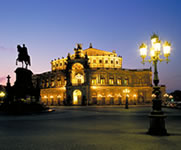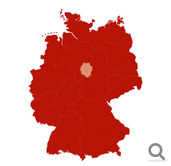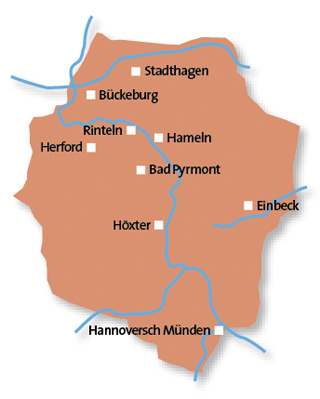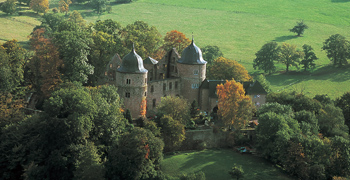
Historical Towns
- Historical towns in Brandenburg
- Cathedral Towns and Cities in Saxony-Anhalt
- The innovative Anhalt-Wittenberg Region
- Enchanting towns in the Harz
- The beautiful towns and cities in Saxony
- Towns and cities of culture in Thuringia
- Beautiful towns of Franconia
- East Bavarian traditional towns
- Alpine towns in the Allg�u
- The eastern Akpine Foothills and their towns
- Towns and villages in the western foothills of the Alps
- Mediterranean towns on Lake Constance
- Towns in the Swabian Alb
- Unspoilt towns in the Black Forest
- Towns for refined tastes in the Heilbronner Land
- Towns in the Odenwald
- Wine towns in Rheinhessen
- Saarland, a region of contrasts
- Romantic towns in the Hunsr�ck and Nahe Regions
- Idyllic towns and villages in the Moselle Region
- The Ahr Rhine Eifel holiday region
- Wine towns on the Romantic Rhine
- Modern towns and cities in the Bergisches Land Region
- The Lahn Valley and its fairytale towns
- Historical towns in Kurhessisches Bergland
- Sauerland's scenic towns
- Fairytale towns in the Weserbergland Hills
- Majestic towns in the M�nsterland Region
- The nine stars of Lower Saxony
- North and East Frisian Islands
- Vibrant Schleswig-Holstein
- Maritime towns along Mecklenburg's Baltic Coast
- Historical Hanseatic Towns
- Germany's Baltic Sea Islands
- The Mecklenburg Lakes
Contact and information
Palaces, porcelain and pampering in the homeland of the Brothers Grimm

Renaissance World of Discovery ®
The Weserbergland hills are home to the largest collection of Renaissance buildings north of the Alps. In a remarkable pilot project, the Renaissance World of Discovery® at Bevern Castle presents this captivating period of history as a modern-day adventure: supported by breathtaking special effects and an authentic musical score, Statius von Münchhausen the castle's original resident and a key figure in the Weser Renaissance talks about his remarkable life and his contemporary views. At the same time he imparts lots of background information on the Renaissance era.Bad Pyrmont
The Germanic tribes and the Romans were among the first to appreciate the Bad Pyrmont springs. But the greatest ever rush to visit its healing waters went down in history as the Great Miracle Trail: in 1556 around 10,000 people from all over Europe descended upon the town in hope of a cure for their suffering. Today you can access first-class therapy in specialist facilities, relax in warm saline pools and escape your everyday cares. Bad Pyrmont's English-style spa gardens were named Germany's prettiest park in 2005. The Palm Garden there has around 300 huge palms and another 400 subtropical plants. It is Europe's most northerly outdoor palm enclosure. The history of Bad Pyrmont is explored at the museum in the Renaissance Palace, whose courtyard provides the setting for a summer programme of open-air concerts and theatre.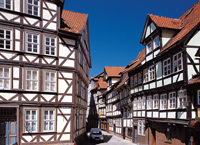
Hannoversch Münden
Hannoversch Münden can look back on a long and fascinating history of shipping, trade and artisan crafts. The period of the staple right was of considerable importance, paving the way for 600 years of growth and prosperity. Take a stroll around the town and discover the history of both its Weser Renaissance buildings: the town hall replete with magnificent paintings and the Guelph palace boasting splendid Renaissance living quarters. The most famous figure from Hannoversch Münden is the travelling doctor, Johann Andreas Eisenbart. Among his contemporaries he was regarded as an ingenious operator who cleverly solicited his patients with the help of an entourage of travelling comedians. The plays of Doctor Eisenbart, performed outside the historical town hall during the summer months, tell of his life and work.Sababurg Castle
Sleeping Beauty's Sababurg Castle crowns a gentle hill close to Hannoversch Münden. The castle enjoyed its heyday as a hunting lodge during the Renaissance and became the starting point for the German Fairytale Route in 1974. It came to be known as Sleeping Beauty's castle because of the thorny hedge that once surrounded the castle and the adjacent zoo. To immerse yourself deeper in the fairytale world of the Brothers Grimm you can take a guided tour around the rose park and Urwald Sababurg (Sababurg Primeval Forest), a nature conservation area graced by Alfons Holtgreve's Sleeping Beauty sculptures.Porcelain heritage at Fürstenberg Castle
High above the Weser river, not far from Höxter, stands Fürstenberg Castle. Originally a hunting lodge from the 13th century, it was given an unorthodox new function in the 18th century. At the request of Elector Carl I of Brunswick, Johann Georg von Langen established a porcelain manufactory within its historical walls. The operation only moved to more modern premises in 1972. Today's manufactory museum displays porcelain products from down the ages.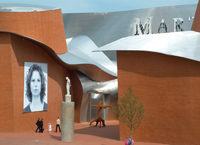
Bückeburg Palace
Magnificent Bückeburg Palace was once the seat of the House of Schaumburg-Lippe. Walking through its imposing rooms offers an unforgettable insight into courtly life and historical splendour. You can stroll through the palace park, which is laid out in the style of an English landscape garden, visit the mausoleum or get an insight into the noble art of riding at the Royal Riding School. The exquisite horses are stabled in the neighbouring Marstall Museum.The Renaissance lives on even in the regional cuisine
The home of the strong local beer known as Bockbier is the town of Einbeck. The Einbeck brewery produced its first bock in 1612. At that time beer was a staple part of people's diet because of the lack of clean drinking water. Drinking bouts where the behaviour ranged from wild to downright dangerous were euphemistically referred to as zuprostgebot: an `obligation to indulge'. Legend has it that Martin Luther was partial to a bock beer or two brewed in the Weserbergland hills. "The best cheer is called Einbecker Beer" is a verse of appreciation that is freely attributed to the great church reformer.Travel Planner
Select an option...
Romance and charm
Pretty little half-timbered towns such as Einbeck, Uslar and Stadthagen are a sheer delight with their historical houses and narrow medieval lanes. Perfect for a leisurely stroll.
Food and drink
The Weserbergland has many local specialities to discover including a herbal liqueur called Wesertropfen (a drop of the Weser), flambéed rats' tails which are actually just pork strips and pekeressen (savoury potatoes).
History and tradition
The German Fairytale Route is highly recommended with a succession of enthralling events along its 600km route. At a number of stops along the way, fairytales, myths and legends are brought to life at folklore celebrations, open-air plays and puppet theatre festivals.
Nature and scenery
Beautiful landscapes that stay long in the memory and one of Europe's prettiest rivers discover all this and more along the Weser Cycle Route.




